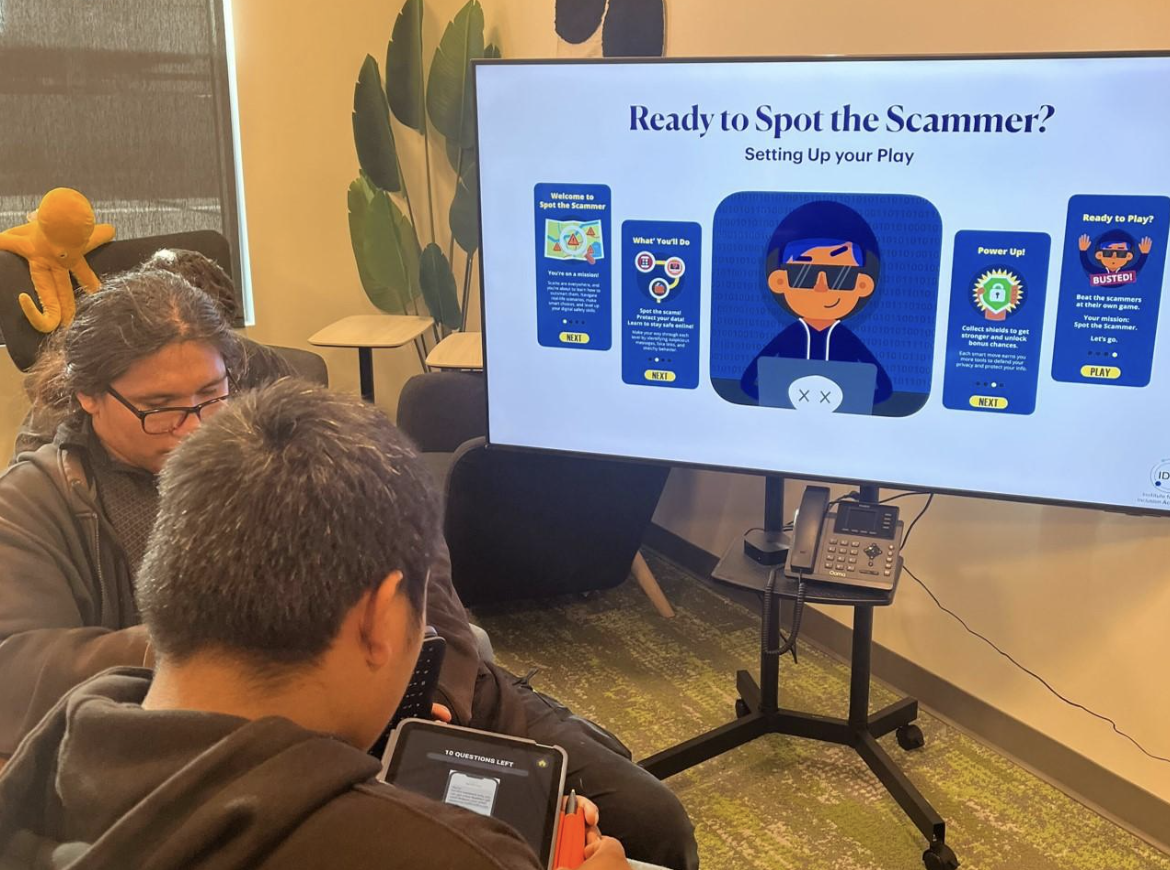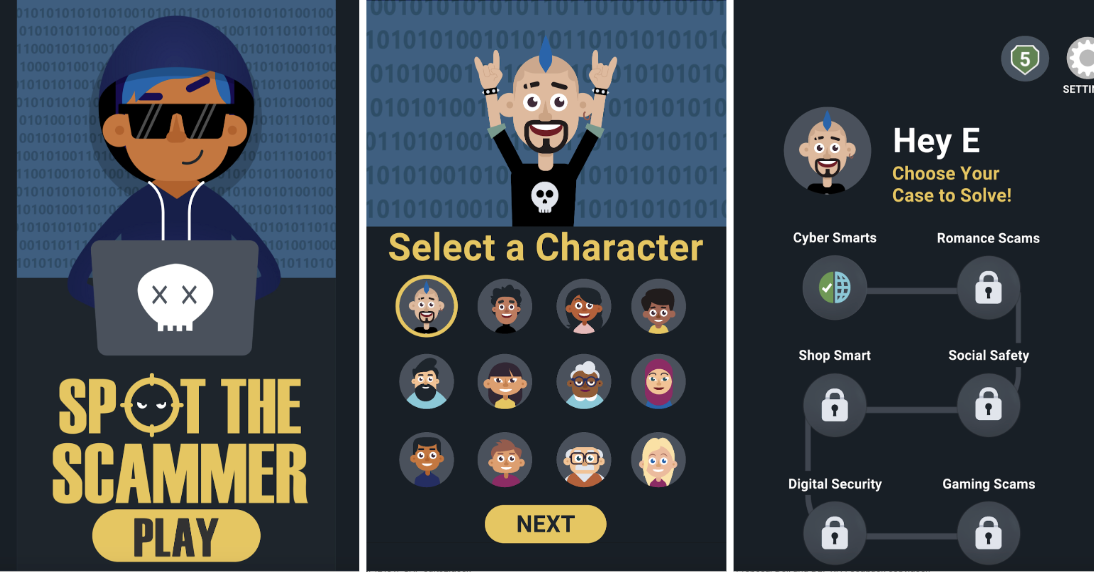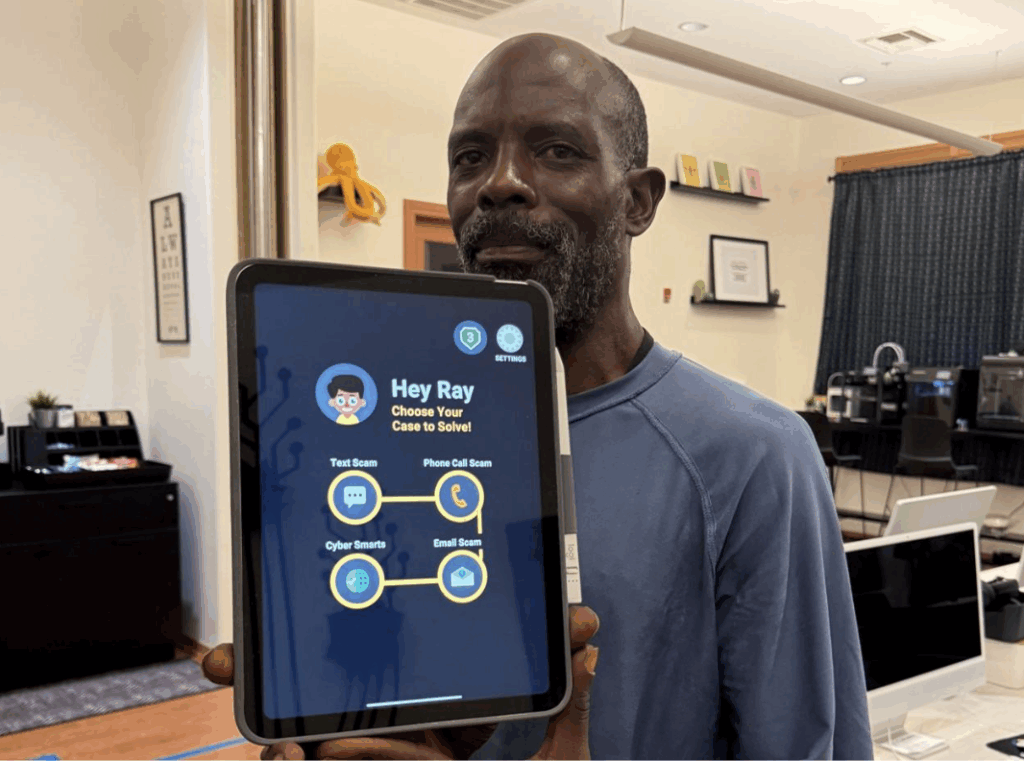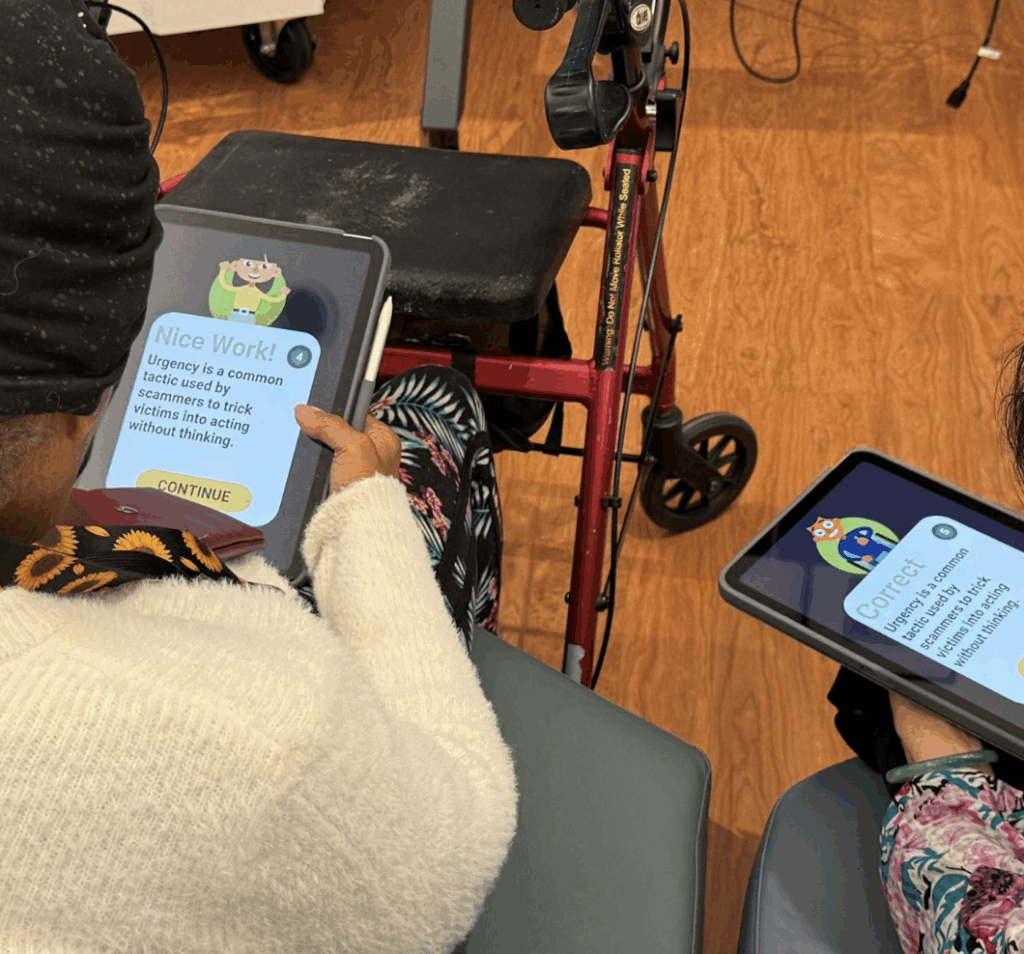
As scams become more widespread, more sophisticated, and more targeted, a new app from the Institute for Digital Inclusion Acceleration (IDIA) is helping Arizonans hone their online “street smarts.”
Spot the Scammer, a free mobile app now available on the Apple App Store, helps people of all ages learn to recognize and avoid online scams and make safer choices online. The app guides users through interactive, age-appropriate scenarios with tips, examples, and quizzes designed to sharpen internet instincts in an engaging, gamified format.
Building Confidence in a Complicated Online World
It’s a timely tool in a world where understanding how to stay safe online is as essential as knowing how to lock your front door.
While the internet is full of opportunity, it also comes with risks. Scams are everywhere, increasingly personalized, and often skillfully disguised as legitimate messages. According to the Federal Trade Commission, reported scam-related losses reached $12.5 billion in 2024 — a 22% spike from the previous year. And that only includes cases that were reported.
Spot the Scammer addresses one of the biggest reasons those numbers keep rising: many people don’t know what a scam looks like until they’ve already clicked. The app helps users spot red flags before it’s too late by educating them on common methods scammers exploit, such as phishing emails, tech support scams, fraudulent job postings, fake giveaways, and password weaknesses.
These schemes often work by exploiting confusion, curiosity, or even kindness. Spot the Scammer aims to close that awareness gap with approachable, plain-language learning that only requires a phone and a little time.
Built With the Community
What makes Spot the Scammer unique is that it was created with the community it serves. From the earliest concept through the current design, Digital Navigators, Hive visitors, and members of Arizona’s cybersecurity community provided input to ensure that every scenario reflected real-world situations people in high-risk groups actually face.
The result is a tool grounded in both best-practice cybersecurity training and community insight—accurate, practical, and deeply relevant to Arizonans who are most likely to be targeted online. This approach ensures that learning isn’t abstract; it’s responsive to the experiences, languages, and environments of those using it.
How the App Works
The app is designed for users across four age categories—children, teens, adults, and seniors—with scenarios and content tailored to the scams each group is most likely to encounter. It covers the most common formats people face every day—phone calls, text messages, and emails—so users can recognize warning signs across all platforms. After selecting their age range and choosing an avatar, users move through quick scenarios, colorful lessons, and quizzes that teach how to detect risks and avoid falling into common traps.

As users move through the app, they earn rewards and shields for successfully identifying each scam scenario, reinforcing awareness through repetition and reflection. A yellow progress bar fills as lessons and quizzes are completed, creating a sense of momentum. The game is designed to be both fun and instructive—encouraging persistence, building confidence, and helping people connect what they experience in the app to what they may encounter online.
“We want to help people protect and defend themselves online,” says Dr. Erin Carr-Jordan, IDIA President and CEO. “As they navigate the game, they grow more confident and more familiar with what they’re likely to see in the real world. The goal is for people to develop the agency and skill to not just complete the game, but to be ready for whatever they encounter next.”
Part of a Broader Ecosystem of Digital Inclusion
Spot the Scammer is the latest addition to IDIA’s growing arsenal of resources for digital inclusion. At the Hives, visitors can attend cybersecurity workshops to supplement their learning, or work with trained Digital Navigators to download the app and work through the modules. Its official launch across the Hives included a fully Spanish-language version — ensuring the tool is culturally adapted and accessible to Arizona’s communities.
In fact, the app is designed to be iterative and will evolve as new threats and needs emerge.
“This is a part of the same goal we’ve always had,” Dr. Carr-Jordan added. “We want people to be connected, but also to feel confident, capable, and well-prepared for whatever the internet throws their way.”


